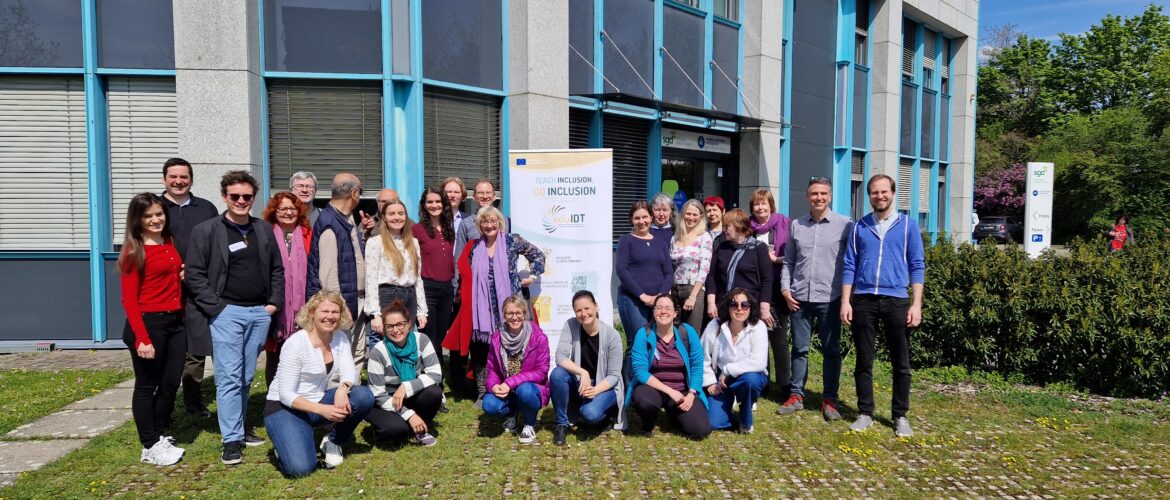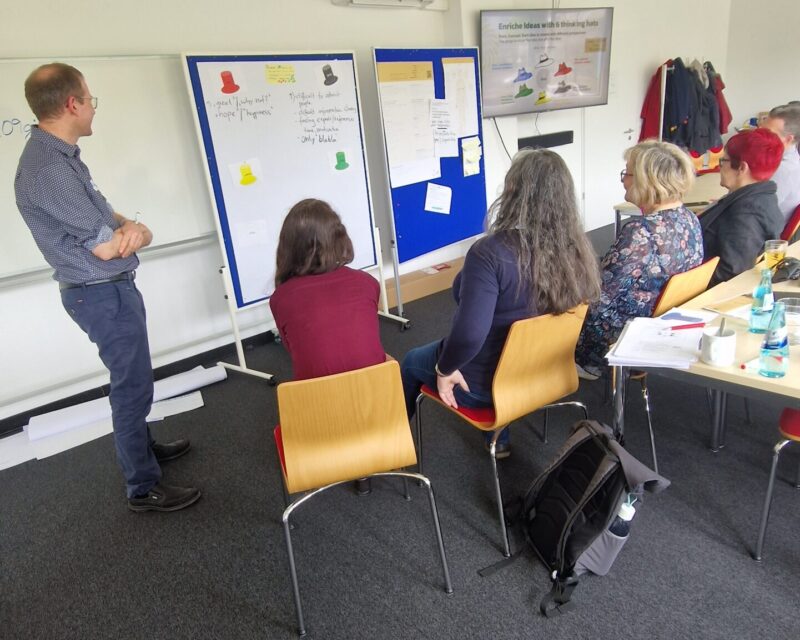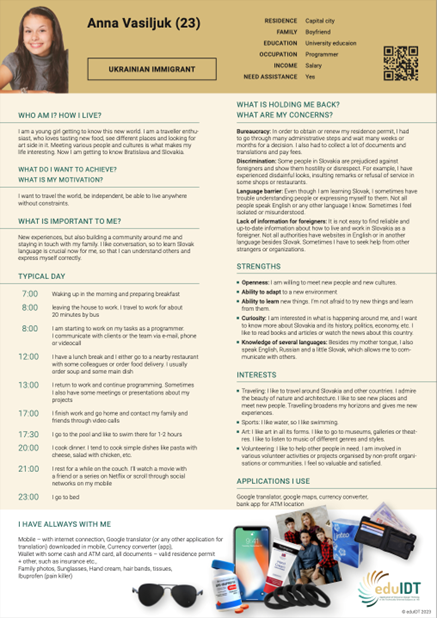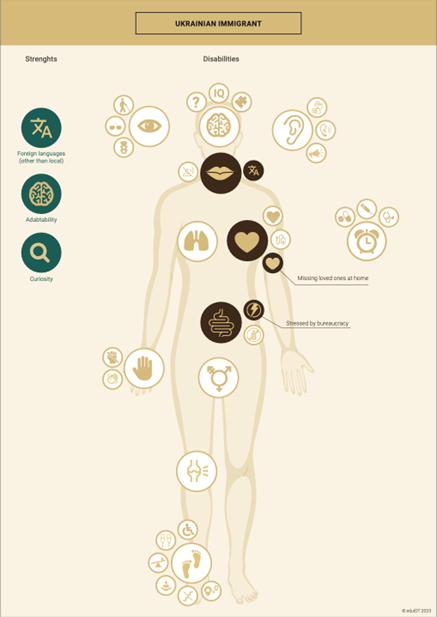Empathy in Action: Inclusive Design Thinking Workshop in Darmstadt

After the inspiring kick-off in Bratislava, our Inclusive Design Thinking journey continued in the charming city of Darmstadt – famously known for its own chemical element, Darmstadtium (Ds, atomic number 110).
Hosted by Wilhelm Büchner Hochschule, the second multinational workshop brought together 17 lecturers from 7 universities across Europe. Participants formed four international teams and engaged in hands-on fieldwork to develop a deeper empathy with underrepresented groups. This was made possible through close collaboration with three challenge sponsors, who shared authentic insights into the needs and challenges of:
- Ukrainian refugees living in Germany – represented by Andrea Matthes, German language teacher at Metropolitan International School
- Visually impaired individuals – represented by Annett Staier and Reinhard Stumpf from Nieder-Ramstädter Diakonie (NRD)
- Senior citizens seeking social and intellectual stimulation – represented by Dr. Egon Hartmann from the Senior Citizens Council
The initial phase of the workshop focused on understanding the status quo from multiple angles: What has already been tried? What worked, what didn’t—and why? What are the limitations of the organizations, available funding, legal frameworks, or stakeholder involvement?

Challenge 1
Challenge 1
How might we support Ukrainian refugees in creating more opportunities for face-to-face and online contact with German citizens, to improve their everyday German?
Challenge 2
Challenge 2
How might we help visually impaired people feel safer and more independent in unfolding their professional capabilities?
Challenge 3
Challenge 3
How might we improve access to higher education for visually impaired individuals?
Challenge 4
Challenge 4
How might we support senior citizens in finding intellectual stimulation outside their homes through face-to-face activities?
Teams held in-depth conversations with sponsors, asking key questions such as:
- What is the current situation, and what are the biggest pain points?
- What has already been attempted, and what were the outcomes?
- Who is directly affected by the issue, and what does their daily experience look like?
- What resources or constraints must be considered (people, time, budget, legislation)?
- What would an ideal solution look like—and how can we stay in touch throughout the process?
Participants also used data from individual interviews conducted during the Explore phase, designed to uncover not only needs, but also emotions, motivations, and values. Sample questions included:
- “When, where, and with whom do you feel strongest—or weakest—and why?”
- “What does your typical day look like? What do you enjoy or avoid most, and why?”
- “What’s important to you in life? What do you want to achieve—and what holds you back?”
- “Which apps, tools, or technologies do you rely on most—and for what purpose?”
This human-centered approach led to the refinement of four key design challenges.
Over the course of three days, teams used empathy-building tools such as personas, impairment sheets, and customer journey maps to identify users’ deepest frustrations, needs, and motivations, often hidden in the fine details of their everyday lives. As one participant noted, the process felt “like being a detective, asking the right questions to reveal what really matters.”
Once these insights were consolidated, teams moved into the Ideation phase, learning and applying creative brainstorming techniques such as Heaven & Hell, the Card Exchange technique, and Six Thinking Hats. A wide range of ideas emerged, which were then evaluated and prioritized using decision-making tools like the Three-Stage Scoring System and Pairwise Comparison.
This workshop marked a significant shift in the project, from deep problem exploration to early-stage ideation. With many promising concepts in development, the next phase focused on prototyping, leading toward the presentation of final solutions at the upcoming international meeting in Žilina.


